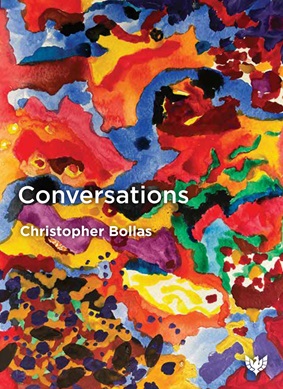The Clinical Comprehension of Meaning: The Bion/Meltzer Vertex

Book Details
- Publisher : Routledge
- Published : July 2023
- Cover : Paperback
- Pages : 340
- Category :
Psychoanalysis - Catalogue No : 97227
- ISBN 13 : 9781032373942
- ISBN 10 : 1032373946
Also by Carlos Tabbia
There are currently no reviews
Be the first to review
In The Clinical Comprehension of Meaning, Carlos Tabbia addresses fundamental questions of psychoanalytic theory and technique, unfolding them for the reader in an elegant, passionate, and poetic style.
This book illustrates three pillars of a psychoanalytic clinic: the structure of the personality, the development of thought, and the ability to foster close relationships with clients. These three pillars show the conditions for the creation of meanings and the difficulties that can be manifested in fanatical functioning, psychosomatic disorders and dreaming, as well as isolation and boredom in adolescents. Using clinical vignettes throughout, Tabbia also analyses the issues surrounding the establishment of an intimate relationship, as well as the issues psychoanalysts must face within themselves. Throughout the volume, Tabbia looks to the work of Bion, Meltzer, Freud, and Klein as well as philosophers such as Plato, Wittgenstein, Russell, Max Scheler, and Levinas, and others such as poets and painters.
Including a prologue by Alberto Hahn and translated into English for the first time, this seminal text will be of interest to psychoanalysts and psychotherapists, as well as students and candidates undertaking psychoanalytic training.
Reviews and Endorsements
'In Clinical Comprehension of Meaning The Bion/Meltzer Vertex, Carlos Tabbia offers us to share an exploration of the thought of two psychoanalytic authors who have contributed creative ideas for the future of psychoanalysis. It already encompasses the Freudian and Kleinian roots and the title contains the depth that the process of subjectivation implies, contained in a psychoanalytic 'process', which from the Meltzerian vertex, integrates the concept of the "natural history" of analysis with its mystery, turbulence, passion and the generation of meaning in the clinical experience. We are neotenic beings, neoteny that opens towards the potentiality of development. We nourish ourselves with meaning, which in the Bionian becoming 'one with oneself' opens paths towards mental growth and to continue evolving. The title also includes the Bionian idea of vertex, a fundamental axis for a conceptual development to become scientific. Psychoanalysis owes Bion some of its most original and profound moments, it explored its limits and took it further in a dialogue with different disciplines of human thought, such as philosophy, mathematics, literature, art. This dialogue generated innovative questions for psychoanalytic practice that changed the landscape of the technique and made possible the psychoanalytic approach to seriously disturbed patients. This book brings us the intimacy of the clinic that the author shows us through his own experiences and his supervision with D. Meltzer, who spoke of the fundamental change that occurred in his clinic when 'Bion entered the study of Meltzer’. Carlos Tabbia develops fundamental questions of psychoanalytic theory and technique, which are unfolded for the reader in an elegant, passionate and poetic style. The 'toolbox' (as Carlos called them in another work) that the analyst has to intuit-apprehend the emotional experience shared with the patient, also finds its space in the 'clinic of meaning'. Carlos tells us that 'only the reader will be able to give full meaning to the pages of this book’. The container generates the meaning and creates its book. The 'language of achievement' that we find in these pages invites us to approach its reading with a 'negative capacity', encouraging us to tolerate uncertainties, doubts, and mystery. I share the gratitude of Dr. Alberto Hahn who in the prologue refers to the enrichment of our clinical sensitivity that this book stimulates and that shows that it is possible to learn creatively from our teachers and inspiring figures.'
Lia Pistiner, lawyer, psychologist, psychoanalyst, and full member with didactic function of SAP (Argentine Society of Psychoanalysis. IPA)
'Carlos Tabbia, through his work Clinic of Meaning. The Bion/Meltzer Vertex invites us to observe and delve into the most recondite depths of the psychoanalytic thought of the masters, S. Freud, M. Klein, W. Bion and D. Meltzer, who will accompany us throughout the text in the background of the author's thought. Tabbia also has an extraordinary ability and generosity to share with the reader an intimate experience in which she unravels the mysteries of mental life and its states.
The text does not stop at the mere transmission of theoretical concepts, which in itself would already be valuable, but Tabbia, with mastery and creativity, advances not only in levels of understanding of the concepts, but also updates them, they emerge as living concepts. Concepts such as: psychic reality and its ups and downs, thought and its alterations, the genesis of meaning, language, dreaming, imagination, intimacy, the function of the parental object, the combined object, projective, intrusive identification, and many others, acquire in the text a new dimensionality only possible by a vast and thoughtful clinical experience of the author.
The book is structured on what he calls The tripod of the psychoanalytic clinic: the structure of personality, thought and intimacy, vertices from which he makes a detailed analysis of the different mental states around patients who deny the psychic reality, those who live in intrusive identification as the primary mode of their communication with the object and those who struggle against the recognition of dependence on the object. From the different vertices, Tabbia unfolds clinical cases of diverse pathologies, very current, of a multicultural population, mostly adolescent patients, but not only: psychosomatic disorders, the isolated adolescent, the bored adolescent, the adolescent with thinking difficulties.
The technique is another variable in which the author's mastery is observed, placing special emphasis on what happens in the analyst's mind as the organizing and understanding center of the analytic process, with a broad journey through countertransference and the effect of interpretations in the bond between patient and analyst and in the minds of both.
Theory, psychopathology and technique, the three pillars of the development of psychoanalytic thought and practice and of psychoanalytic training, come together in a work of great richness, depth and creativity. A text from which we all learn; experienced psychoanalysts will have the opportunity to enter unknown corners and observe them in a different light, they will have the opportunity to rethink what they already thought they understood and to enrich their psychoanalytic background. For young analysts, psychoanalytic psychotherapists or those who are beginning their training, the journey through these pages accompanied by Carlos Tabbia will open doors to their passion, their curiosity, learning and psychoanalytic knowledge.
Philosophy, literature, painting enrich a beautiful and true psychoanalytic writing. Carlos Tabbia's capacity for communication and transmission, his rigour, seriousness and sincerity have an impact on Spanish-speaking readers and I have no doubt that it will have the same effect on Anglo-Saxon readers. The Anglo-Saxon psychoanalytic world will greatly benefit from the knowledge of this work.'
María Eugenia Cid, clinical psychologist, psychoanalytic psychotherapist, and a psychoanalyst member of the Madrid Psychoanalytic Association (IPA). She is currently the President of the European Federation for Psychoanalytic Psychotherapy
'In the first place, it is a book written with aesthetic qualities that integrates psychoanalytic thought based on Freud, Klein, Bion and Meltzer together with the contributions of philosophers and artists. This conjunction creates a book that is easy to read and understand.
Secondly, it is a book that deepens the concepts it addresses and illustrates it with abundant clinical practice.
These two conditions make it a suitable book so that those very experienced in psychoanalytic thinking can review topics that are always present in the clinic, as well as those who are starting to feel accompanied in their first steps.
One particularity of the book is that it maintains an ever-present unity despite addressing very current clinical issues such as thought disorders or difficulties in the clinic of boredom as well as establishing intimate relationships.
The subject index is very useful to guide research.'
Giorgio Corrente, psychotherapist and psychoanalyst, ordinary member of the Italian Psychoanalytic Society and Int. Psychoanalitical Association (IPA)
'Carlos Tabbia's book stands out for the solidity and clarity that it shows both in the approach to concepts and in the transmission of the clinic, qualities that make it a text with additional value for those who teach in the field of psychoanalysis and dynamic psychotherapy.
As indicated from the very title of the book, it falls within the Bionian-Meltzerian current, of which it offers us a reliable presentation of its conceptually denser aspects as well as the corresponding clinic, with a remarkable spirit of systematicity that It is undoubtedly based on the years of joint work with Donald Meltzer, among other prominent psychoanalysts. He underlines the importance of the notions of "psychic reality" and "values", which he puts in close relationship with very pertinent philosophical and literary references, of which he shows signs of profound knowledge. The nosology that he proposes to us is clearly clinical; we see it emerging from the session itself, from the process, for which it requires constant comparisons and differentiations with those other configurations that –similar– nevertheless differ in their parameters, which leads him to enrich the text with subtle precisions. Thus, it distinguishes the clinic that we can observe when it comes to the predominance of the denial of reality, from that other one that is related to splitting and intrusive identification, to finally show us the role of immaturity and the fight against the combined object in a third group. The reference to the nature of the analyst's task also appears clearly when he is faced with the challenges of the proto-mental states, among others, which so require his availability.'
Dr. Ricardo Antar, full member of APdeBA (IPA) with a didactic function and full professor at the University Institute of Mental Health (IUSAM-Argentina) of APdeBA. Child and adolescent psychoanalyst, also by the International Psychoanalytic Association
Table of Contents
Introduction
1. Conceptual Framework
2. Elements of a Post-Kleinian Nosology
3. The Tripod of Psychoanalytic Practice
4. The Analyst's Task
About the Author(s)
Carlos Tabbia is Psychologist who specialises in Clinical Psychology. He is a founding member of the Barcelona Psychoanalytic Group, and fellow of the Argentine Society of Psychoanalysis (IPA), and lecturer of the European Federation for Psychoanalytic Psychotherapy (EFPP). He carries out teaching and supervision work in several psychoanalytic training institutions in Barcelona and other Spanish cities, as well as Italy, Argentina, Mexico, and Chile.
Customer Reviews
Our customers have not yet reviewed this title. Be the first add your own review for this title.
You may also like
Recognising, Understanding and Treating Nameless States: A Psychoanalytic...
Bernd Nissen
Price £28.99








